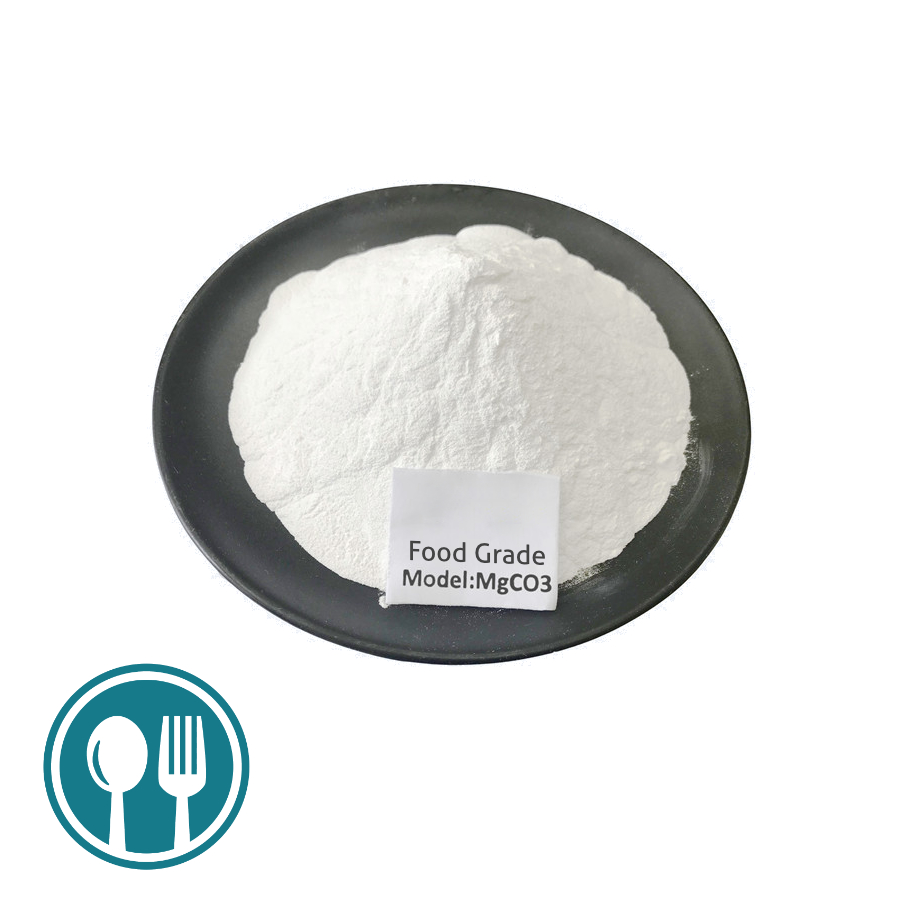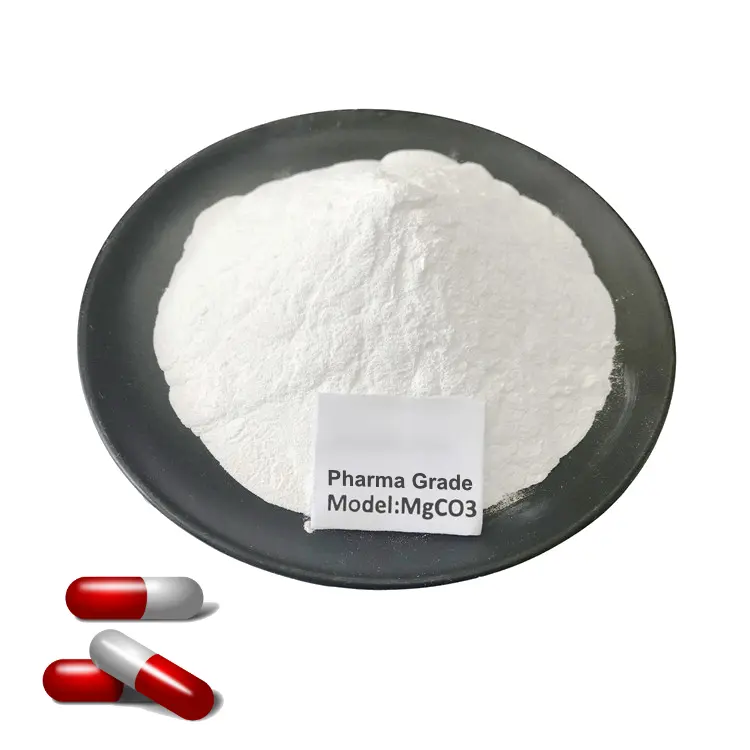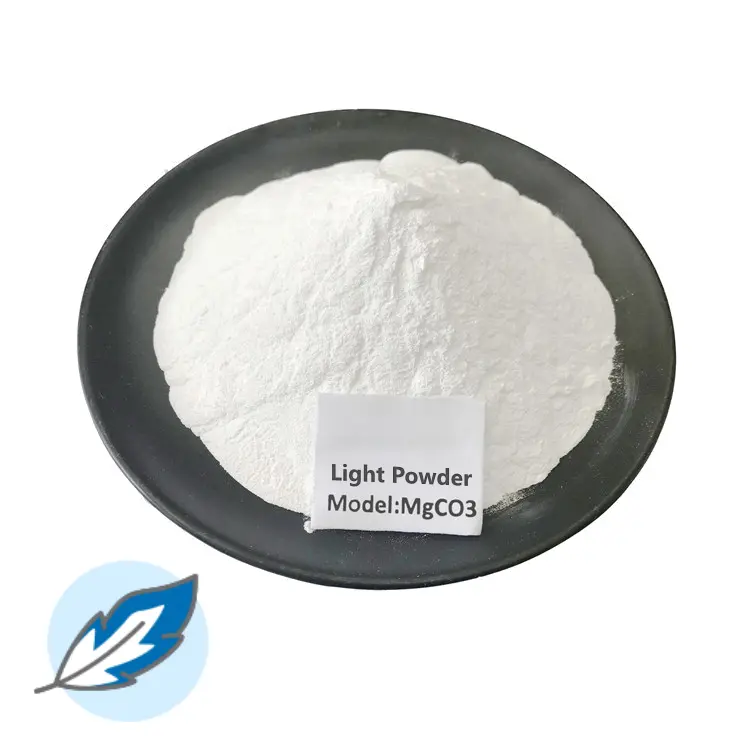Anhydrous magnesium carbonate exists in the form of magnesite in nature, and complete isomorphism can be formed between mgco3 and feco3, that is, mg2+ and fe2+ in the crystal structure can replace each other due to their similar properties, and their crystal physical properties vary with the two The number of elements changes in a linear trend. The unit cell structure and chemical bonds remain unchanged, mg2+ and fe2+ can be miscible with each other in proportion, and various isomorphic mixtures with different contents can be formed. Natural magnesite generally contains Fe, which is difficult to remove, and there are also impurities such as Ca, Mn, Si, etc. Therefore, the products processed by direct grinding of minerals usually have low purity and poor quality.
Anhydrous magnesium carbonate can replace basic magnesium carbonate or magnesium carbonate trihydrate as an additive in high-grade glass, fine ceramics, fireproof coatings, daily necessities and pharmaceutical products, etc., and can play the role of reinforcement, anti-wear, flame retardant and so on. In addition, the most important application of anhydrous magnesium carbonate is as a new type of inorganic flame retardant. The decomposition temperature of anhydrous magnesium carbonate is between 300-500°C, and a large amount of CO2 is produced by decomposition. This process is an endothermic reaction, and the unit reaction endothermic heat is 864j/g. No harmful substances are produced during the decomposition process, and the product co2 can isolate the air and block the oxygen source. In theory, a very good flame retardant effect can be obtained, and it is especially suitable for fire retardant and flame retardant of electrical materials with relatively high temperature requirements.
The research on anhydrous magnesium carbonate is still in the exploratory stage. A small number of anhydrous magnesium carbonate used in industry is prepared from high-quality magnesite through physical processing (such as grinding, grading and crushing, etc.).



In foreign countries, as early as 2008, basic magnesium carbonate 3mgco3 mg(oh)2 3h2o was used as raw material, placed in ethylene glycol solvent and continuously fed with CO2, and a pure-phase mgco3 crystal was prepared at 150 ° C; using Magnesium powder, methanol and co2, after a series of reactions, mgco3 gel is formed; magnesium chloride and co2 are used to generate pure phase mgco3 under the pressure of 120 ℃ and 3 bar; domestic researchers mainly focus on the preparation of anhydrous magnesium carbonate. Prepared thermally. Using different magnesium sources and urea to carry out hydrothermal reaction at 160°C, rhombohedral microcrystalline particles with a particle size of about 10um were formed after 30 hours; In the system, magnesium carbonate crystals with a particle size of about 30um were formed after reaction at 160°C for 24 hours, and their optical properties were studied;
The intermediate magnesium ammonium carbonate is produced by the reaction of magnesium salt and ammonium carbonate, and then the whisker-shaped anhydrous magnesium carbonate product is obtained by low-temperature calcination. This method avoids the traditional high-temperature and high-pressure environment treatment, reduces production costs, and the product can be used as a flame retardant The agent is used in actual production; using the hydrothermal treatment process, using mgcl2 as the magnesium source and urea as the precipitating agent, sodium citrate and chitosan are added to the hydrothermal system to prepare three-dimensional flowers with a particle size of 15um under different conditions. Spherical product with shape and particle size of 20um.
Generally speaking, the preparation of anhydrous magnesium carbonate is mostly concentrated under high temperature and high pressure conditions, which may be determined by the characteristics of the substance itself. The existing preparation research generally has harsh reaction environments, long reaction times, and large crystal particle sizes. As an inorganic powder material, good dispersibility and uniform and fine particle size are important criteria for evaluating product quality. Therefore, one of the important research directions for anhydrous magnesium carbonate is to prepare a product with good dispersibility, uniform particle size, and energy For powders used in industry, in addition, the reaction time should be shortened as much as possible to improve the reaction efficiency. On the other hand, the morphology of inorganic powder can often affect its own properties, so the preparation of inorganic powder with special morphology can expand its application field in actual production.
In order to solve the deficiencies of the prior art, a method for preparing anhydrous magnesium carbonate with special morphology based on hydrothermal carbonization reaction is provided. The method has simple process, mild conditions, and the prepared anhydrous magnesium carbonate has good dispersibility and various shapes. .
The method for preparing anhydrous magnesium carbonate with special morphology based on hydrothermal carbonization reaction, the steps are as follows:
Adjust the initial pH of ascorbic acid aqueous solution to 5.5-14.0, add magnesium salt, stir and place the mixture in a reaction kettle, the reaction temperature is 120-250°C, and the reaction time is 1-12 hours. After post-treatment, pure phase anhydrous magnesium carbonate is obtained.
The concentration of the ascorbic acid aqueous solution is 10-200mg/ml. The magnesium salt is one of magnesium sulfate, magnesium chloride, magnesium hydroxide, magnesium oxide or magnesium acetate. The magnesium salt is added to control the concentration of mg2+ in the reaction liquid to be 0.5-3.0 mol/l. The initial pH of the aqueous ascorbic acid solution was adjusted with naoh or koh. The reaction temperature is 150-250°C.
The process is simple, no additional CO2 is needed, the conditions are mild, and the required equipment is simple and easy to operate. Energy-saving and high-efficiency, anhydrous magnesium carbonate with good dispersion, uniform particle size and various shapes can be prepared in a short period of time.
